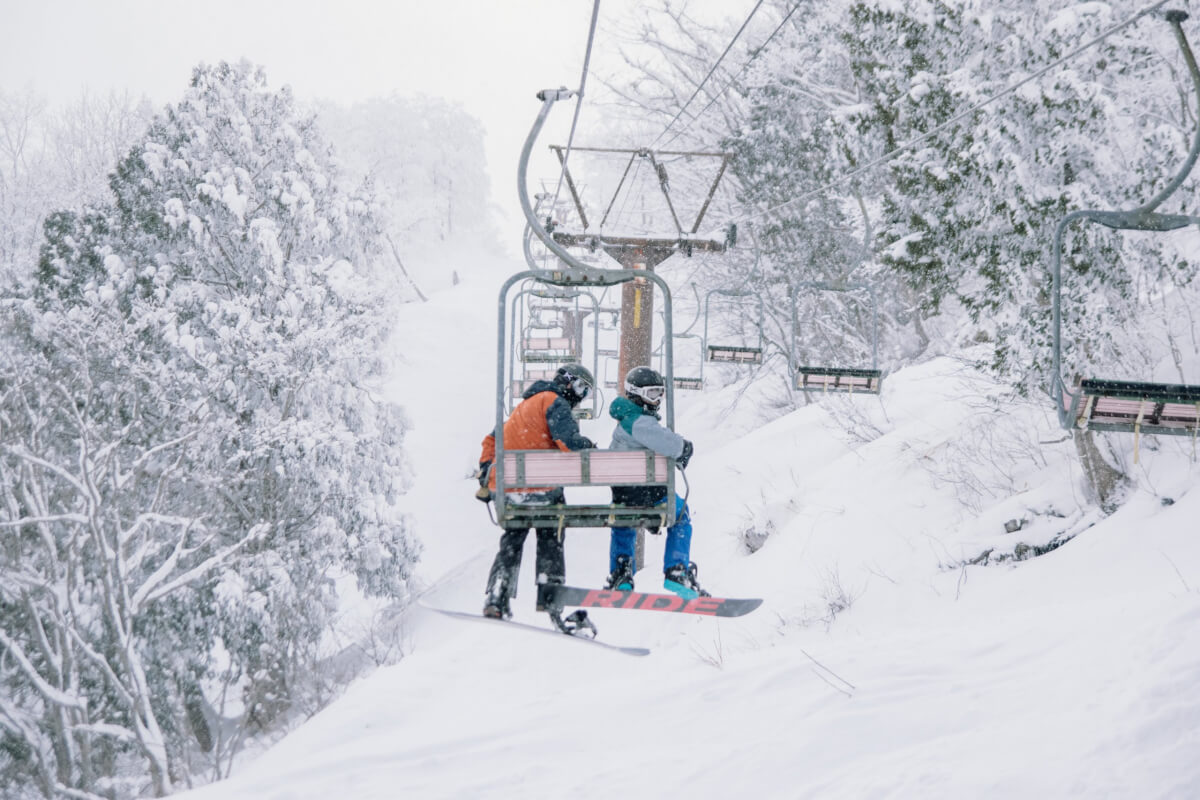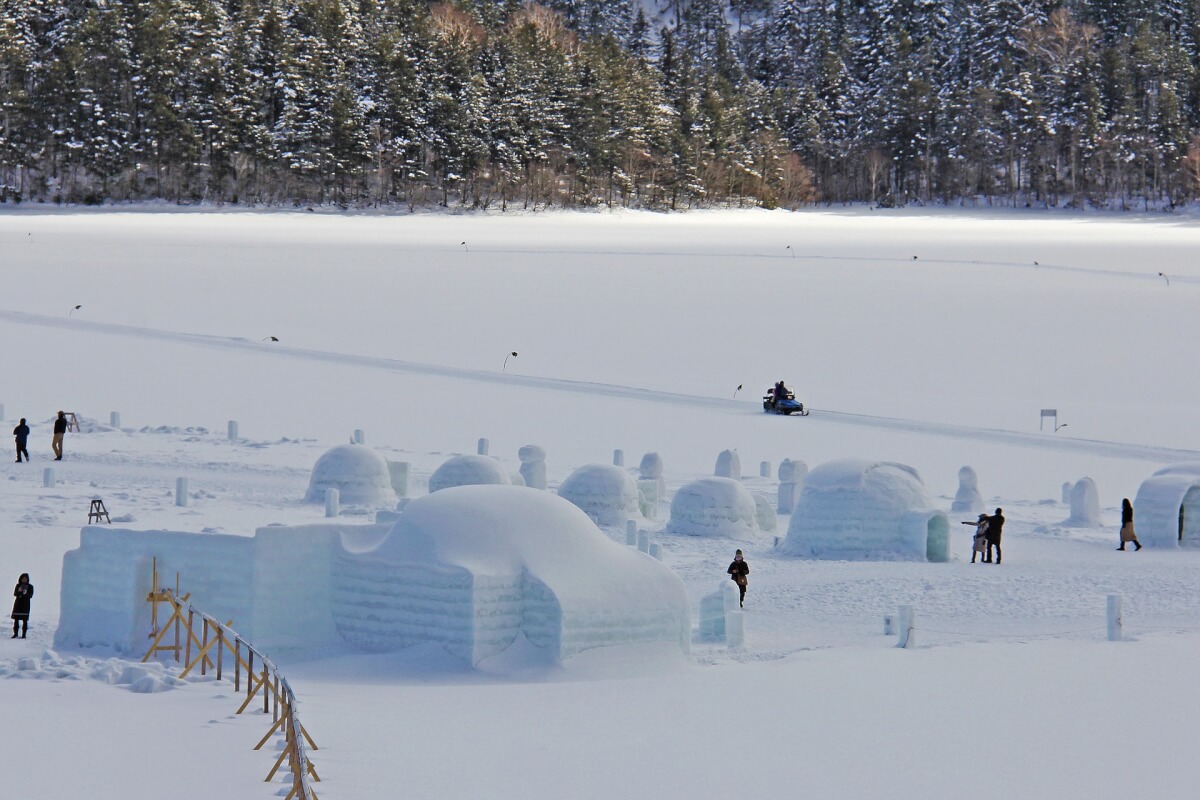The most fun, beautiful, and healthy activity in autumn is going out to enjoy the “color change of leaves,” koyo in Japanese. You can see postcards looking at scenery everywhere during this season. We’ve carefully selected some special spots around Tokyo; in the parks surrounded by buildings in the city center, and also in the quieter suburbs of Tokyo or neighboring areas. The peak season for koyo in the Kanto region is usually from mid-November to early December, and some places will be illuminated only for a limited time. Which place would you like to visit for the beautiful autumn?
1. Meiji Jingu Gaien
This 300-meter-long ginkgo tree-lined road is often used in movies and TV dramas. The paths extend from Aoyama-dori to Meiji Jingu Gaien in downtown Tokyo. The beautiful tunnel created by 146 golden ginkgo trees, with the historical museum building in deep in the background guarantees as striking photo. The ground beneath the trees is completely covered with a golden carpet of ginkgo leaves.

Access
Gaienmae Station (Tokyo Metro Ginza Line) or Aoyama Icchome Station (Tokyo Metro Ginza Line, Hanzomae Line, Toei Oedo Line)
2. Mt. Takao
Mt. Takao is easily accessible from central Tokyo. Here you can enjoy the autumn leaves and some hiking at the same time. Throughout the year, the mountain collects many visitors including hikers, wildlife watchers, and the mountain asceticism shugendo practitioners. You can go up the hill by cable car or a lift while looking down on the colorful trees. From the top viewpoint, you can see the skyscrapers of Tokyo and even Mt. Fuji when the weather is clear. Usual peak season here starts from mid Novmember.

Access
5 min walk from Takaosanguchi Station (Keio Line). Direct connection by a semi-express train from Shinjuku.
3. Mt. Mitake
On Mt. Mitake, you can enjoy unspoiled nature at its finest, and especially so in the autumn season. Visitors can hike through little villages, pass by waterfalls and rock formations, and take a rest stop beside one of the shrines or temples. Although you can easily visit from the city center, it provides an amazing sense of escape from metropolitan Tokyo. The Musashi Mitake-jinja Shrine is said to be founded in 736 and has been visited ever since by devotees. At the bottom, the Mitake valley takes on the look of a classical Japanese painting, its crystal-clear stream having been selected as one of 100 famous waters in Japan.

Access
10 min bus ride from Nitake station to lower station of the Cable car. To Mitaka station, take JR Chuo Line to Ome station from the central Tokyo and change to JR Ome Line.
4. Rikugien Gardens
This traditional Japanese garden is perfect for strolling. It is a magnificent miniature imitation of wild natural scenery which took 7 years to complete during the Edo period. There are 400 maple trees and 560 ginkgoes. Along with these and many other varieties, the trees literally decorate the lake with shades of red, orange, yellow and gold. During the autumn foliage period, the park’s opening hours are extended and beautifully illuminated in the evening.

Access
7 min walk from komagoe station (JR Yamanote Line, Tokyo Metro Nanboku Line)
Entrance fee: 300 yen
Open: 9:00-17:00 (21:00 for autumn) Close: New Year’s Holidays
5. Yoyogi Park
Yoyogi Park is the fifth largest park in all of Tokyo’s 23 wards. It is located next to Harajuku and the Meiji Gingu shrine. It has a lively atmosphere and is packed with young people and foreign visitors throughout the year. It became a park after Tokyo Olympics in 1964. The yellow leaves of the ginkgo trees (near the Harajuku gate) and the bright red of the Japanese maples near the fountain pond make a beautiful contrast. You can rent bicycles in the park, so we recommend cycling while enjoying the autumn colors (210 yen per hour).

Access
3 min walk from JR Harajuku station
6. Imperial Palace East Gardens
The East Garden, Ninomaru Garden, is attached to the Imperial Palace in downtown Tokyo. The autumn leaves reflect beautifully on the pond, creating a true sense of Japanese aesthetics. There are also several historical sites from the period of Edo castle shogunate.

Access
5 min walk from Otemachi station (Tokyo Metro various lines) or 15 min walk from JR Tokyo station
7. Koishikawa Korakuen Garden
This garden was originally built as a part of notable domain family, Mito Tokugawa, in the Edo period. There are buildings that imitate the scenic beauty of Japan and China. The highlight of koyo view points near the Ooi river area is an imitation of Arashiyama, Kyoto. The park is a true wonder of nature, even though located right next to the urban skyscrapers. As such, it offers an oasis for busy Tokyo citizens.

Access
8 min walk form Iidabashi station (various lines)
8. Shinjuku Gyoen
Shinjuku Gyoen is a short walking distance from the world biggest station hub, Shinjuku.
This garden was designed in the Meiji era and skillfully combined three different international gardens. The autumn season offers red maple trees in the Japanese Garden whereas yellow ginkgo can be seen in the English Garden; the golden plane trees are unique to the French Garden.

Access
Ookido gate of the park is 5 min walk from Shinjuku Gyoen station Exit 2 (Tokyo Metro Marunouchi Line). Shinjuku Gate is 10 min walk from Shinjuku station southern exit (various lines).
9. Showa Memorial Park
Easily accessed in 30 min from central Tokyo, the showa memorial park is known for magnificent ginkgo trees. It is an ideal place to enjoy the stunning autumn colors. The most impressive area during this season is the 20 meter high ginkgo trees that line the sides of a 300 meters walkway. Here, the yellow fallen leaves carpet the ground.

Access
2 min walk from Nishi-Tachikawa (JR Ome Line )
Entrance fee: 410 yen
Open: 9:30~17:00 Close: New Year’s holidays
10. Hamarikyu Gardens
No forest here, but a truly magnificent tea house, set among the colorful leaves of the surrounding trees. The Matsu no Ochaya and Tsubame no Ochaya tea houses were faithfully restored based on the historical documents. The structures blend in beautifully and match in tone with the autumn colors of the maple, gooseberry, and cherry trees around the edge of Shioiri Pond.

Access
5 min walk from Tsukijishijo Station (Toei Oedo Line)
Entrance fee:300 yen
Open:9:00〜17:00 Close: New Year’s holidays.
11. (Outside of Tokyo) Kegon Waterfall and Lake Chuzenji, Nikko
At an altitude of 1269m, Lake Chuzenji is a mirror-like body of water that beautifully reflects the amazing variety of trees in Nikko National Park. Approximately 20,000 years ago, it is said that the lake was shaped by lava during an eruption from one of the surrounding mountains. Fortunately, extra pleasure boats are scheduled during autumn foliage season. From the water, you can spot the changing colors of the autumn leaves; maples, sumac, beech, water oaks, wigs, and more. The water of Lake Chuzenji exits only to 100-meter-tall Kagen waterfall. There is also the Akechidaira Ropeway (410 yen for adult, 200 yen for children) that climbs to an altitude of 1,730 meters in 3 minutes. Here, you can look over an outstanding view of the waterfall and Lake Chuzenji. Add all this to the colorful trees seen from top observatory deck and you’ll have made the perfect season complete.
Peak season starts around mid-October.

Access
50-minute bus ride from the stations. Tobu Nikko station can be accessed by a limited express from Asakusa station (Tobu Line) or JR Nikko station by the JR Shinkansen and transfer in Utsunomiya to JR Nikko Line from Tokyo or Ueno station
As you can see, there are many wonderful places where you can enjoy autumn in Tokyo. Come anytime in the fall, but usually in the second half of November the trees begin to turn bright colors. Don’t forget to bring a warm jacket and scarf for chilly weather and if you want to avoid the crowds, we recommend visiting on weekdays or in the early morning.
Follow us on Instagram or Facebook for more travel inspiration. Or tag us to get featured!
Happy travelling!
Other articles you might like







